If you were squinting just right, you could see the ground moving beneath Nick Saban’s feet last season. LSU, until recently one of the last proud purveyors of Big Burly Manball, had modernized its offense and produced numbers no one had seen before, throwing for 6,000 yards, beating Alabama in Tuscaloosa and zooming to 15-0. Auburn, meanwhile, was playing the conference’s most exciting and interesting defense; Bama’s Iron Bowl rival was the only team to hold LSU under 36 points and turned said Iron Bowl with a pair of pick-sixes.
Alabama lost to both of its primary rivals and finished eighth in the AP poll, its lowest placement since 2010 (the previous time one of these two rivals won the national title). Was this the turning point then? Is the Saban dynasty finally crumbling to the ground?
Yeah, right. SEC West play is scheduled to begin on Sept. 26, and guess who’s projected to top the division pretty comfortably. As Saban finally gets his way, temporarily, on larger conference schedules, his team could also have its way once more in division play.
(Of course, we thought that last season, too, didn’t we?)
Jump to: Arkansas | Mississippi State | Ole Miss | LSU
Auburn | Texas A&M | Alabama
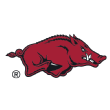
Coach: Sam Pittman (first year)
2019: 2-10 (0-8), 108th in SP+
2020 projection: 2-8, 75th
Five best returning players: RB Rakeem Boyd, LB Bumper Pool, CB Montaric Brown, C Ty Clary, LT Myron Cunningham
A coach’s first year on the job is always a tricky one. You don’t have time to bring in many of your own recruits for that first season. You have to implement your vision of the program with players recruited for someone else’s vision. And since your new employer had to hire someone in the first place, it means either that your new team was really bad the previous season, or that it was good enough to lose the previous coach to a better job. Either way, implementing your own culture will have plenty of obstacles.
Now add to that normal mess a combination of (a) the coronavirus stoppage limiting the amount of practice time you had, (b) your new employer being not merely bad, but AWFUL the past two years (Arkansas in 2018-19: 4-20), and (c) living in the toughest division in college football. Also, in Sam Pittman’s case, (d) you’re a first-time head coach. This is a Year Zero if ever one existed.
One of the most proven offensive-line coaches in the game — over the past 25 years, he has served in that role at Oklahoma, Missouri, Kansas, Northern Illinois, North Carolina, Tennessee, Arkansas and Georgia — Pittman’s done as well as he could this offseason. He hired proven coordinators in Kendal Briles (former Baylor, Houston and Florida State offensive coordinator) and Barry Odom (former Missouri head coach). To deal with two years of hopeless quarterback play, he brought in Florida grad transfer Feleipe Franks. He even found a catchphrase. But his Hogs are still playing from behind.
As with Vanderbilt, SP+ projects the Hogs as multiscore underdogs in every game. It’s not quite as hopeless a situation as Vanderbilt’s, though — they have at least a 28% chance of winning in three games (at Mississippi State, Ole Miss, at Missouri), while Vandy’s top probability is 17%. Plus, they just have more talent.
On offense, Franks and running back Rakeem Boyd (1,293 combined rushing and receiving yards) are absolute SEC talents, and three different returning wide receivers (junior Mike Woods and sophomores Treylon Burks and Trey Knox) posted at least one 90-yard game last season. Briles’ on-field track record is well established, and he and Franks should have a nice rapport.
Last season’s Razorbacks defense was decent at times against the run, but a secondary full of freshmen and sophomores got absolutely worked. Five of last season’s top eight linemen are gone, as is linebacker and leading tackler De’Jon Harris, so Odom will have some holes to patch in the ground game. But the secondary does have the experience it lacked. Corner Montaric Brown is probably the best bet to be a standout in the back.
The bright side for Odom is that the bar is low — Arkansas has ranked higher than 67th in defensive SP+ only once in the past five years (49th in 2018). The offense underwent a slow-motion collapse over recent seasons, but the defense was just mostly bad.
I guess that really wasn’t actually much of a bright side, was it?
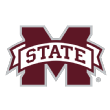
Coach: Mike Leach (first year)
2019: 6-7 (3-5), 51st in SP+
2020 projection: 3-7, 48th
Five best returning players: RB Kylin Hill, DE Marquiss Spencer, DE Kobe Jones, WR Osirus Mitchell, FS C.J. Morgan
Mike Leach’s first SEC gig was a mixed bag. As Hal Mumme’s Kentucky offensive coordinator in 1997, he took over a Wildcats offense that had averaged a ghastly 12.5 points per game the season before and helped to nearly triple its output. They were far more entertaining, but they still went just 2-6 overall in league play.
There will probably be some parallels this fall. While Leach doesn’t inherit nearly the same offensive mess from the outgoing Joe Moorhead — the Bulldogs were 36th in offensive SP+ in 2019 — he will likely both liven things up in his first season and lose more than he wins. Such is life with all-SEC schedules at the moment.
Leach inherits a much stronger defensive line than what he’s used to recruiting (the top four returnees are all former blue-chippers or close to it), and while he’s never been much for running the football, he also inherits one of the country’s best veteran RBs in 1,300-yard rusher Kylin Hill, who should also be a solid receiving threat out of the backfield.
Leach brought in former Stanford quarterback K.J. Costello, and his receiving corps, though unproven, is imposing. Senior Osirus Mitchell (6-foot-5, 210 pounds) is a solid downfield threat, former Alabama receiver Tyrell Shavers (6-6, 200) could be, too, and Austin Williams (6-3, 200) could be ready for a larger role. Plus, it appears Leach is prepared to use inherited tight ends such as Dontea Jones (6-4, 230) and sophomores Geor’quarius Spivey (6-5, 240) and Brad Cumbest (6-5, 245) as inside receivers. He also moved quarterback Garrett Shrader (6-4, 215) to that role. It’s still going to be a Leach offense, of course, but it’s going to be bigger and more physical.
New defensive coordinator Zach Arnett comes from Rocky Long’s San Diego State system, and while ends Marquiss Spencer and Kobe Jones should thrive up front (both are strong pass-rushers and weigh a combined 560 pounds), Erroll Thompson is the only inherited linebacker who took at least 100 snaps last season, and Martin Emerson is the only cornerback who took more than 225. Big junior college transfers Jordan Davis and Tyrus Wheat will be asked to contribute quickly at linebacker, as could blue-chip freshman corner Emmanuel Forbes.
Leach has famously said that it takes only three days to install his offense. He tends to hit the ground running on that side of the ball — his first starting quarterback at Texas Tech (Kliff Kingsbury) threw for 3,418 yards, and two QBs combined for 3,965 yards in his first season at Washington State — and I’m excited to see what he does with such a physically imposing skill corps. But MSU is scheduled to visit four teams projected in the SP+ preseason top 25 (Alabama, Georgia, LSU, Kentucky) and hosts Texas A&M and Auburn as well. Home games against Arkansas, Vanderbilt and Missouri should keep the record from getting too lopsided, but even an improved Mississippi State is going to struggle this season.
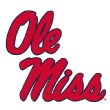
Coach: Lane Kiffin (first year)
2019: 4-8 (2-6), 53rd in SP+
2020 projection: 4-6, 38th
Five best returning players: RG Ben Brown, RB Jerrion Ealy, LB Jacquez Jones, QB Matt Corral, LB Sam Williams
Lane Kiffin likes to keep things loose. He enjoys himself on Twitter, he dragged Nick Saban out of his comfort zone (and dragged Alabama’s offense into the 2010s), and he maintains his sense of humor at almost all times.
It makes thematic sense, then, that his return to the SEC came in part because a player celebrated a touchdown by imitating a urinating dog.
Elijah Moore‘s ill-fated celebration, followed by the missed PAT that cost Ole Miss the Egg Bowl, also cost Matt Luke his job after three seasons of leading his alma mater. Luke went just 15-21 while guiding his Rebels through the sanctions left behind by the Hugh Freeze era. And now Kiffin gets to lead the program into the future.
Kiffin’s eccentricities might have distracted some people from the fact that he’s a hell of a coach. He indeed modernized Alabama’s offense in the mid-2010s and won a national title in the process, and in three years as Florida Atlantic’s head coach, he led the Owls to their first two Conference USA titles. (And hell, even his ill-fated stint as USC’s head coach, in which he went 28-15 over 3.5 seasons, looks somewhat appealing in retrospect.) Despite his nearly two full, high-profile decades as a coach, he’s somehow only 45.
He inherits some tantalizing offensive personnel, too. Sophomore running backs Jerrion Ealy and Snoop Conner combined for 1,234 yards (6.7 per carry) last season, and while former coordinator Rich Rodriguez’s offense took a run-heavy turn in 2019, a receiving corps of Moore and young former blue-chippers such as Jonathan Mingo and Dannis Jackson could produce some fireworks. The line is pretty thin, but the trickiest thing for Kiffin and offensive coordinator Jeff Lebby will be figuring out how to get the most from two quarterbacks. Sophomore passer Matt Corral was born to play in a Kiffin system, but John Rhys Plumlee was as explosive with his legs as he was limited with his arm.
Depth is far more of a problem on the defense. Three of last season’s top four linemen are gone, as is leading safety Jalen Julius, and a high percentage of Ole Miss’ recent blue-chippers play on the offensive side of the ball. Still, the return of MoMo Sanogo gives co-coordinators Chris Partridge and DJ Durkin quite a bit to work with in the middle of the defense, and both corner Keidron Smith and corner/safety Jaylon Jones are solid. Between senior Sam Williams, redshirt freshman Brandon Mack and former Guelph University standout Tavius Robinson, at least one solid edge rusher should emerge. But outside of inside linebacker, the proven quantities are minimal.
The schedule’s about as kind as an SEC West schedule can be — Auburn and Alabama come to Oxford, and the Rebels always draw Vanderbilt out of the East. Still, getting to .500 will require some new defensive standouts to emerge and the offensive line to hold up. It might also require some sort of cloning job to combine all of Corral’s and Plumlee’s good traits into one QB.

Coach: Ed Orgeron (40-9, fourth full year)
2019: 15-0 (8-0), second in SP+
2020 projection: 7-3, 13th
Five best returning players: CB Derek Stingley Jr., WR Terrace Marshall Jr., S JaCoby Stevens, WR Racey McMath, DT Glen Logan
Ed Orgeron famously bombed as Ole Miss’ head coach, then appeared on track to become a permanent position-coach-turned-interim-head-coach when he landed his dream gig at LSU. In 2019, his third full year on the job, he fielded one of the best offenses in college football history and rolled to a national title.
He then proceeded to lose most of the reasons for last season’s run: No. 1 NFL draft pick Joe Burrow, all-world wide receivers Ja’Marr Chase and Justin Jefferson, running back Clyde Edwards-Helaire, four offensive-line starters, six of the Tigers’ top nine defensive linemen, four of their top five linebackers and three of their top five defensive backs. Oh yeah, and offensive assistant (and honorary coordinator) Joe Brady went to the NFL, while defensive coordinator Dave Aranda took the Baylor head-coaching job.
The Tigers were ranked sixth in the preseason AP poll — already the lowest placement for a defending champion since Auburn started out 23rd in 2011 — but kept losing players to opt-outs after the vote. That made them a trendy “overrated!” pick, which completed quite a magic trick: Even after 2019, we might be underestimating Orgeron all over again.
The 2020 LSU Tigers are an interesting experiment in judging teams by what they lose vs. judging them by what they return. The “lose” list is legion, but here’s what they haven’t lost:
-
Derek Stingley Jr., the best cornerback in college football.
-
FCS All-American and former North Dakota State linebacker Jabril Cox.
-
Safety JaCoby Stevens, LSU’s steadiest defensive back (and a strong playmaker) last season.
-
Wide receivers Terrace Marshall Jr. and Racey McMath, who combined for 956 yards and 16 TDs last season.
-
Four offensive linemen with starting experience, plus veteran D-linemen Glen Logan and, if he opts back in as reported, Neil Farrell Jr.
-
Offensive coordinator Steve Ensminger, who did still outrank Brady (and still has Brady’s playbook).
-
Quarterback Myles Brennan, who almost certainly won’t replicate Burrow’s otherworldly production but did get plenty of reps in last season’s run of blowout wins.
-
A special-teams unit that ranked 12th in special teams SP+ last year and returns all of its legs.
-
Young blue-chippers everywhere. Sophomore RBs John Emery Jr., Tyrion Davis-Price and Chris Curry. Sophomore receiver Trey Palmer, plus incoming freshmen Arik Gilbert — a hybrid TE and matchup nightmare — and Kayshon Boutte. Offensive linemen Kardell Thomas and Marcus Dumervil. Sophomore defensive tackle Siaki Ika. Layers of star freshmen at each level of the defense.
I admittedly didn’t love Orgeron’s replacement hires — NFL veteran Scott Linehan replaced Brady, and old friend Bo Pelini replaced Aranda — and there’s nowhere to go but down after the way the Tigers finished 2019. But even though all this turnover dropped LSU to 13th in the preseason SP+ rankings (fourth in the SEC West), the defending champs are the only team that can come close to matching Alabama’s raw, top-to-bottom upside. And in starting the season with Mississippi State, Vanderbilt and Missouri, they could build an early rhythm before the big challenges start. The Tigers were overrated right up until the point where they maybe became underrated again.
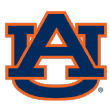
Coach: Gus Malzahn (62-31, eighth year)
2019: 9-4 (5-3), ninth in SP+
2020 projection: 6-4, 11th
Five best returning players: LB Zakoby McClain, CB Roger McCreary, LB K.J. Britt, WR Anthony Schwartz, QB Bo Nix
We’ve grown accustomed to freshman quarterbacks thriving quickly. USC’s Kedon Slovis, North Carolina’s Sam Howell and UCF’s Dillon Gabriel all shined in 2019, Clemson’s Trevor Lawrence, Georgia’s Jake Fromm and Alabama’s Jalen Hurts all led their teams to the CFP title game as freshmen in recent years, and Alabama’s Tua Tagovailoa came off the bench to save the day in one as well.
The success of others has made it difficult to set a proper bar for players like Auburn’s Bo Nix. The son of former Auburn quarterback Patrick Nix became the Tigers’ starter immediately and had what you might call an old-fashioned freshman campaign. That is to say, it was bumpy. He produced a 180 passer rating or higher three times (twice against SEC foes), but it fell under 110 in six games as well, and Auburn averaged under 18 points per game in losses. Still, despite sketchy overall performances against Oregon and Alabama, he nailed each game’s most important throws, and Auburn won both games. And with another brilliant Kevin Steele defense (the Tigers were fifth in defensive SP+), Auburn still went 9-4 overall.
It could have been much worse for Nix, but in 2020 he has to be much better. The cast around him has been hit hard by attrition. Those responsible for 60 of last season’s 65 offensive-line starts are gone, and the defense has to replace not only last season’s top four defensive backs but also all-world defensive linemen Derrick Brown and Marlon Davidson.
Depth was a strength for last season’s Auburn D, so let’s assume the Tigers will be mostly fine on that side of the ball. Despite the losses in the back, four returning DBs all logged at least 300 snaps, including ball-hawking corner Roger McCreary. The linebacking corps is loaded with experience, and the line is loaded with former star recruits. Steele combines athleticism with disguise about as well as any defensive coach, and AU has ranked sixth or better in defensive SP+ for three consecutive years. This is likely still a top-10 unit.
That brings us back to the offense. After ranking 34th in offensive SP+ last season, it needs to become at least a top-20 unit or so for Auburn to contend, and the run game is undergoing a rebuild with a new line and backs Shaun Shivers and D.J. Williams (plus a blue-chip freshman or two). The pressure is on not only Nix but also a trio of veteran receivers to produce more consistency than what the Tigers boasted last season. Seth Williams, Eli Stove and Anthony Schwartz combined for 1,766 rushing and receiving yards and 15 TDs last season, but Auburn was only 92nd in passing success rate. Gus Malzahn brought in former Clemson offensive coordinator and former SMU and Arkansas head coach Chad Morris to help with that, and we won’t have to wait long to see how things will go: Auburn’s first two opponents were projected 26th (Kentucky) and first (Georgia) in defensive SP+.
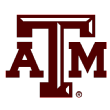
Coach: Jimbo Fisher (21-5, third year)
2019: 8-5 (4-4), 21st in SP+
2020 projection: 7-3, 10th
Five best returning players: LB Buddy Johnson, RB Isaiah Spiller, DE DeMarvin Leal, QB Kellen Mond, S Leon O’Neal Jr.
Jimbo Fisher lost eight games in his first two seasons at Florida State before a third-year breakthrough. Behind veteran quarterback E.J. Manuel and an excellent defense, FSU jumped to 12-2, and then, with a precocious redshirt freshman quarterback named Jameis, the offense completed its leap in Year 4 and the Seminoles rolled to the national title.
If, like many, you’ve spent this offseason talking yourself into Texas A&M, you probably already figured out some parallels there. Fisher has lost nine games in his first two seasons in College Station, but he’ll have a reasonably accomplished senior quarterback in Kellen Mond and a veteran defense in Year 3. Fisher’s Aggies are only 1-7 against the top-10 teams he’ll eventually have to beat to justify his 10-year, $75-million contract, but it usually takes a while to build something great.
Mond has one more chance to put together a breakthrough performance. The senior from San Antonio has been all-or-nothing in his time in College Station, completing 64% of his passes with a 147 passer rating in wins but only 54% with a 114 rating in losses. His receiving corps is greener than you’d like it to be, especially following leader Jhamon Ausbon‘s recent opt-out. With onetime slot receiver Ainias Smith likely playing running back, that means sophomore Jalen Preston is the only returning wideout who caught more than two passes last season. He caught three.
Tight end Jalen Wydermyer does return after catching 32 passes, and junior Hezekiah Jones caught 15 balls in 2018 before missing last season, so the cupboard’s not completely bare. Plus, Preston, redshirt freshmen Kam Brown and Dylan Wright and true freshmen Demond Demas and Moose Muhammad III are all former blue-chippers. But you’d prefer to have to lean on only one freshman to break through. A&M might need two or three.
The run game should be excellent. Sophomores Isaiah Spiller and Smith combined for 1,000 rushing yards (mostly from Spiller) and 451 receiving yards (split 50-50) last season, and the line returns four starters. The Aggies were 11th in rushing success rate and return most of the reasons why. But at some point, Mond and his receivers will need to make a play downfield. Can they?
After averaging a No. 51 defensive SP+ ranking from 2013 through 2017, A&M ranked 21st and 23rd in Fisher’s first two seasons. The run defense was all-or-nothing last year, but the pass defense was excellent. Of the 16 players who logged at least 200 snaps, 11 return, including a star in linebacker Buddy Johnson and a trio of seasoned safeties. Defensive coordinator Mike Elko has some impressive depth to work with, but there is a big question mark at cornerback following Debione Renfro’s departure and Elijah Blades‘ opt-out. Senior Myles Jones returns, but Elko might have to dip into a well of freshmen to find the depth he needs. And if the Aggies are true breakthrough candidates, a top-25 defense probably needs to threaten the top 10.
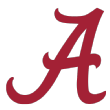
Coach: Nick Saban (44-12, fifth year)
2019: 11-2 (6-2), third in SP+
2020 projection: 8-2, second
Five best returning players: WR DeVonta Smith, LT Alex Leatherwood, CB Patrick Surtain II, LB Dylan Moses, RB Najee Harris
It took a generational LSU offense, a freaky quarterback injury, two Auburn pick-sixes and a whole bunch of field goal misfortune (LSU and Auburn went 6-for-6 on field goals of 40-plus yards, while Bama missed a 30-yarder against Auburn) for Nick Saban and Alabama to finally miss the College Football Playoff after five consecutive appearances. With one more break, the Crimson Tide maybe keep the streak alive; alas, Bama lost twice in the regular season for the first time since 2010 and finished outside of the SP+ top two for the first time since 2008. (It was third.) Oh, the horror. The shame.
The most recent time the Crimson Tide suffered a multi-loss regular season, of course, they responded by winning back-to-back national titles. It’s hard to predict that in an era that sees a few different superpower programs cranking along in or near fifth gear, but it probably wouldn’t surprise you either, would it? Both of Saban’s coordinators return after years of steady turnover, and first-round quarterback Tua Tagovailoa’s successor, Mac Jones, got enough experience in replacing him midway through 2019 that he almost qualifies as a returning starter.
After ranking first in defensive SP+ for four straight years (2014-17), the Tide have slipped a bit by their standards. A rebuilt secondary held them back in 2018, and a run of linebacker injuries and extreme youth in the front seven created some glitches last season. Of course, they slipped only to seventh and third, respectively, but hey, that’s regression in Tuscaloosa.
It’s the secondary’s turn once more to face the spotlight. Four of last year’s top five DBs are gone, and while the corner talent is high-level — Patrick Surtain II is on the short “best corners not named Stingley” list, and junior Josh Jobe is excellent — sophomore Jordan Battle is now the dean among safeties. Blue-chip freshmen like Brian Branch will have to be up to speed from day one.
An elite front seven will certainly help. Last year’s freshmen — linebackers Shane Lee and Christian Harris, tackles Christian Barmore and DJ Dale — are this year’s seasoned sophomores, and veterans like linebackers Dylan Moses and Joshua McMillon and end LaBryan Ray return after missing all or most of 2019 as well.
The offense has ranked ahead of the defense in SP+ in each of the past two seasons, and this season could see No. 3 in a row. Jones was mostly tremendous in filling in for the injured Tagovailoa late last season and will likely get a continued push from blue-chip freshman Bryce Young. Despite losing two star receivers to the NFL, Bama’s still got one of the best skill corps in the country. DeVonta Smith (1,256 yards and 14 TDs) and Jaylen Waddle return out wide, and running back Najee Harris surprised many (including me) by returning to build off of last season’s 1,528 combined rushing and receiving yards. The line loses an All-American tackle (Jedrick Wills Jr.) but returns another one (Alex Leatherwood), plus four others with starting experience.
Within the West, only LSU can match Bama’s pure upside, and no one can match the Tide’s depth. Last season was a change of pace, but Bama likely starts a new CFP streak this winter.